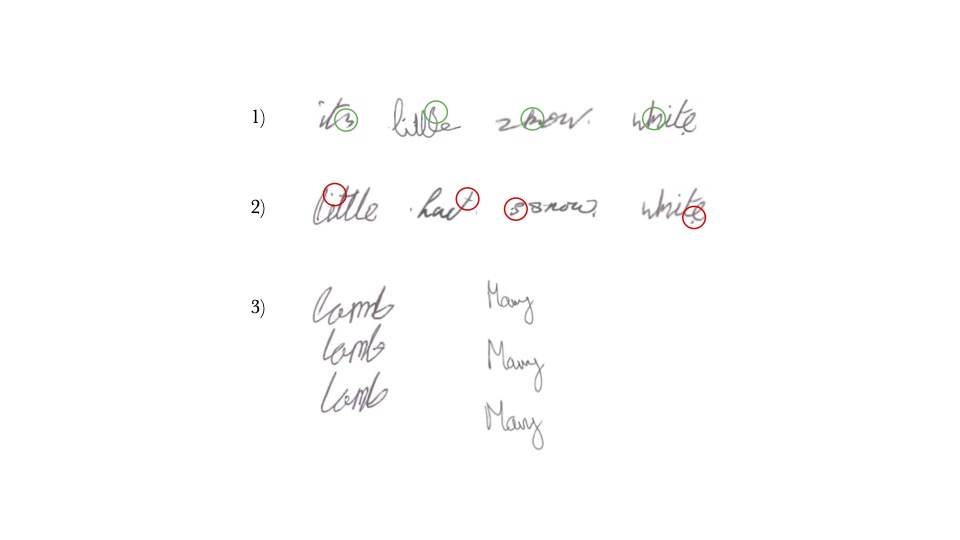Objective: To assess iRBD patients’ handwriting features and develop a rating scale capable of detecting early hallmarks of disease.
Background: Handwriting changes, such as micrographia, are a widely recognised early manifestation of Parkinson’s Disease (PD) [1,2]. Whilst isolated REM sleep behaviour disorder (iRBD) has been associated with future risk of PD, handwriting pattern alterations in this condition remain unexplored.
Method: This was a cross-sectional study of 58 participants (29 polysomnography-confirmed iRBD and 29 age-and-sex frequency-matched controls). Participants copied a standard sentence three times using pen and paper and were timed whilst doing so. Handwriting scripts were reviewed by a graphologist and scored from 0 to 8 based on the following criteria: 1) micrographia, 2) sentence slope, 3) hidden tremor, 4) retracing, 5) resting marks, 6) irregular shape, 7) excessive pen pressure, 8) inconsistent word spacing. All items were scored 0 or 1 point, reflecting the absence or presence of each sign.
Results: The iRBD group had a slower writing pace than controls (iRBD: 76.70s (SD = 30.39); control: 61s (SD = 10.71); p=0.004). Oscillations in letter stroke (defined as ‘hidden’ tremor) were the most common feature amongst the iRBD group (72.0% vs 34.5%; p=0.005), followed by sentence slope (60% vs 24% p=0.005) and increased pen pressure (48% vs 14%; p=0.006) [figure1]. Micrographia was seen to a similar extent in both groups (iRBD 45.4%, controls 41.4% p=0.801). The scale showed an ability to correctly detect iRBD yielding 72.7% and 70.6% specificity with an area under the curve (AUC) of 0.74 (cut off 4; 95% CI, 0.60-0.88).
Conclusion: Writing speed, pen pressure, stroke oscillations and sentence slope are handwriting features that warrant further investigation to define early patterns beyond micrographia in people with iRBD.
Figure 1
References: [1] Rosenblum, S., Samuel, M., Zlotnik, S., Erikh, I. & Schlesinger, I. Handwriting as an objective tool for Parkinson’s disease diagnosis. J. Neurol. 260, 2357–2361 (2013).
[2] Seyed-Mohammad Fereshtehnejad, Chun Yao, Amelie Pelletier, Jacques Y. Montplaisir, Jean-Francois Gagnon, Ronald B. Postuma, et al. Evolution of prodromal Parkinson’s disease and dementia with Lewy bodies: a prospective study.
To cite this abstract in AMA style:
R. Torricelli, J. Kenny, E. Bache, L. Pérez-Carbonell, B. Huxford, H. Chohan, G. Leschziner, A. Lees, A. Schrag, A. Noyce, C. Simonet. Handwriting Features in Patients with Isolated REM Sleep Behaviour Disorder [abstract]. Mov Disord. 2024; 39 (suppl 1). https://www.mdsabstracts.org/abstract/handwriting-features-in-patients-with-isolated-rem-sleep-behaviour-disorder/. Accessed April 1, 2025.« Back to 2024 International Congress
MDS Abstracts - https://www.mdsabstracts.org/abstract/handwriting-features-in-patients-with-isolated-rem-sleep-behaviour-disorder/

